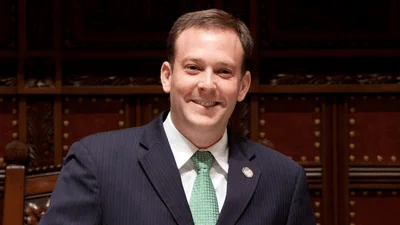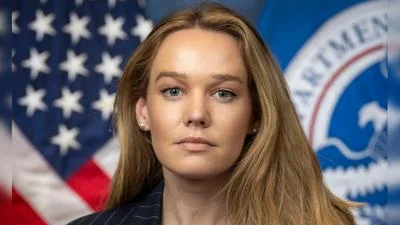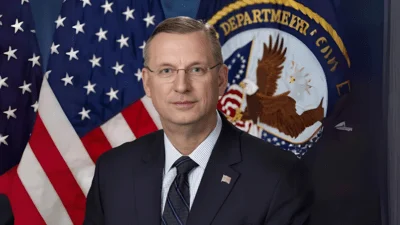The U.S. Department of Energy (DOE) invests in high-impact research, development, and demonstration to make clean energy at least as affordable and convenient as traditional forms of energy. Part of DOE’s mission is to ensure the benefits of clean energy reach all Americans, especially those historically underserved by the energy system and overburdened by pollution.
The Inflation Reduction Act includes provisions that reduce pollution, advance environmental justice, and lower energy costs. Through tax credits and other financial incentives, consumers can now pay less for more energy-efficient appliances, cleaner cars and trucks, and home upgrades.
Why Clean Energy Matters
Why Clean Energy Matters
Learn why clean energy is important and transitioning the United States to a clean energy economy enhances economic growth, energy independence, and the health and well-being of the American people.
Learn more
DOE invests in projects and activities to make clean power more accessible and affordable. Check out some of the latest efforts:
Accessible, Affordable Solar Energy
Community solar provides clean power to consumers who subscribe to a nearby, shared solar energy system. It’s a low-cost option for those who can’t install solar panels on their rooftops. The Solar Technologies Office (SETO) hosted its third annual National Community Solar Partnership Summit on January 19 in San Diego, California, and virtually, with roundtable discussions about community solar markets, accessible financing, customer acquisition, and access to capital.
That day, SETO also launched the Community Power Accelerator, a platform that connects solar developers, investors, philanthropists, and community-based organizations to finance and deploy more community solar projects. The Accelerator will build a pipeline of credit-ready community solar projects, especially those benefiting underserved communities, connecting them with investors and philanthropic organizations to fund projects.
SETO also announced the winners of the $100,000 Sunny Awards for Equitable Community Solar prize competition, which recognizes solar projects and programs that use or develop best practices to increase equitable access to community solar for subscribers and their communities. Read more about the summit.
Accessible, Affordable Wind Energy, Transportation, and More
The Wind Energy Technologies Office recently released a $28 million funding opportunity to bring more wind power to more Americans by breaking down barriers to deployment. About $20 million will fund research projects to improve technologies that transmit large amounts of electricity from offshore wind over long distances; improve permitting processes to make distributed wind more accessible to communities where it can be equitably deployed; and to better understand the impacts of offshore wind development on communities. The remaining funding will support projects that reduce the impacts of wind technologies on wildlife.
About one-third of U.S. greenhouse-gas emissions come from the transportation sector, affecting millions of Americans, particularly those from disadvantaged communities. Transportation costs are the second-largest annual household expense in the country, and for the poorest Americans, the financial burden is disproportionately and unsustainably high.
Seal saying "Are You A Clean Energy Champion?"
Every American can advocate for renewable energy by becoming a Clean Energy Champion. Both small and large actions make a difference.
Join the movement.
On January 10, the Departments of Energy, Transportation, Housing and Urban Development, and the Environmental Protection Agency announced the U.S. National Blueprint for Transportation Decarbonization, a pathway to a clean transportation sector that improves air quality, lowers transportation costs, and creates better-paying manufacturing jobs.
Furthermore, EERE’s new Clean Energy to Communities program helps communities transition to clean energy. It connects local governments, electric utilities, community-based groups, and others with national lab experts and tools to meet each community’s unique needs and interests.
The Importance of Energy Efficiency
Approximately one-third or more of the energy used by buildings goes to waste, costing as much as $150 billion annually. On January 18, EERE's Building Technologies Office (BTO) launched the $22 million Buildings UP prize to increase the capacity of subnational teams to develop and implement building upgrades that create more energy-efficient buildings and clean-energy-ready homes, commercial spaces, and communities.
BTO also launched $45 million BTO Benefit 2022/23 funding opportunity to reduce the cost of building decarbonization and improve quality of life for building occupants. Selected research projects will focus on innovations in heating, ventilation, air conditioning, water heating, thermal and battery energy storage, and more.
And the $2.4 million American-Made Equitable and Affordable Solutions to Electrification Prize (EAS-E prize) incentivizes innovators to develop and deploy techniques to make electrification cheaper and easier for contractors to implement and for homeowners to afford in diverse communities and all housing types.
While these are some of our more recent efforts to improve energy accessibility and affordability, all EERE’s work takes energy accessibility and affordability into account.
Original source can be found here.









